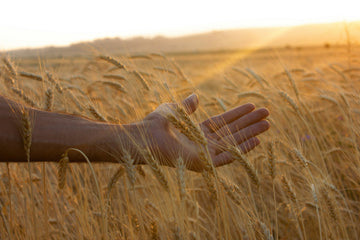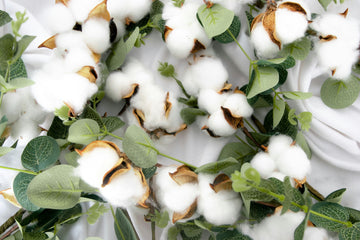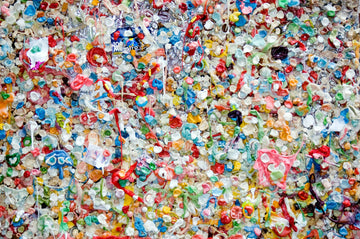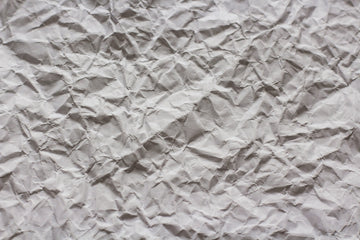As the world shifts towards more sustainable practices, alternative materials are becoming essential in reducing our reliance on plastics and other non-renewable resources. One such material is wheat straw, a natural byproduct that is helping to revolutionize eco-friendly products. But what is wheat straw, and why is it an important step in our journey toward a more sustainable future?
What is Wheat Straw?
Wheat straw is the stalk left over after wheat grains have been harvested. Traditionally, this agricultural byproduct was considered waste and often burned, contributing to pollution. But in recent years, innovators have found ways to repurpose wheat straw into useful products, offering a biodegradable and renewable alternative to plastic and other harmful materials.
Why is Wheat Straw a Sustainable Choice?
Wheat straw’s eco-friendly properties stem from the fact that it’s a byproduct of farming—no additional resources are needed to grow it. By using what was once considered agricultural waste, we reduce environmental harm while creating something functional and sustainable.
Key Environmental Benefits of Wheat Straw:
- Biodegradability:Unlike conventional plastics that take hundreds of years to decompose, wheat straw is biodegradable and breaks down naturally, reducing waste in landfills.
- Waste Reduction:Repurposing wheat straw prevents it from being burned or discarded, cutting down on both agricultural waste and air pollution.
- Renewable Resource:Wheat is grown globally and harvested annually, making wheat straw an easily accessible and renewable material.
How Wheat Straw is Changing Everyday Products
Wheat straw is now being used in a range of products, from everyday items to innovative packaging solutions. As a sturdy, natural material, it has become an excellent substitute for traditional plastic and synthetic materials.
1. Food Containers and Tableware
One of the most common uses of wheat straw is in eco-friendly food containers and utensils. Plates, bowls, and cutlery made from wheat straw are durable, lightweight, and safe for food use. These products are perfect for picnics, parties, and even day-to-day use, offering a sustainable alternative to single-use plastic.
The biodegradable nature of wheat straw also means that when these items reach the end of their life, they can break down naturally, leaving little to no environmental impact. It's a small step that has a large effect on reducing the global reliance on disposable plastics.
2. Reusable Drinkware
Water bottles, cups, and coffee mugs made from wheat straw have gained popularity for their eco-friendly design and practicality. These items are not only durable and long-lasting but also create less environmental strain in their production and disposal compared to their plastic counterparts. For anyone looking to reduce plastic waste in their daily routine, wheat straw drinkware provides a smart and sustainable alternative.
3. Tech Accessories
Innovators have even incorporated wheat straw into tech accessories like phone cases and charging stands. These products blend style and sustainability, showing that even tech enthusiasts can reduce their environmental impact with thoughtful choices. Wheat straw-based tech accessories are lightweight, durable, and unique, offering a sustainable twist on everyday items.
Branding and Corporate Gifts: Why Wheat Straw Matters
For companies looking to align with environmentally friendly values, wheat straw products present a unique opportunity to reflect their sustainability goals. Whether for corporate gifts, branded merchandise, or promotional giveaways, choosing wheat straw products communicates a commitment to eco-consciousness.
Imagine attending a conference or receiving a promotional gift that isn’t another plastic item but a sleek, eco-friendly product made from natural wheat straw. This subtle shift not only enhances a brand’s image but also encourages recipients to adopt sustainable habits in their own lives.
Why Choosing Wheat Straw is Important
In today’s world, every small step towards sustainability counts. Choosing wheat straw products over plastic or other synthetic materials is a simple yet effective way to reduce your environmental footprint. When you opt for wheat straw, you’re supporting a circular economy where waste is repurposed rather than discarded.
The more we use natural, biodegradable materials in our everyday lives, the less we rely on harmful plastics. Wheat straw represents a step in the right direction, providing a natural, renewable resource that supports sustainable living without sacrificing quality or convenience.
Incorporating Wheat Straw into Your Life
Adopting wheat straw in daily life can be incredibly simple. From carrying a reusable wheat straw water bottle to using wheat straw plates at your next gathering, small actions can make a significant impact. Incorporating wheat straw products is not just about making an environmentally responsible choice—it’s also about setting an example for others and creating demand for sustainable products.
Whether you’re an individual looking to reduce waste or a company aiming to minimize its environmental impact, wheat straw offers a straightforward way to support sustainability. It’s about being part of a movement towards smarter, more thoughtful consumption.
Conclusion
Wheat straw is more than just a farming byproduct—it's a powerful symbol of how we can turn waste into a valuable resource. By choosing wheat straw products, you’re not only reducing your personal plastic use but also supporting a broader movement towards sustainability. In a world where our choices increasingly matter, opting for wheat straw is a simple, effective way to contribute to a healthier planet.





